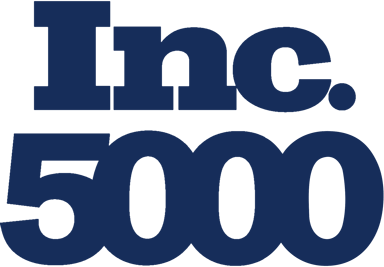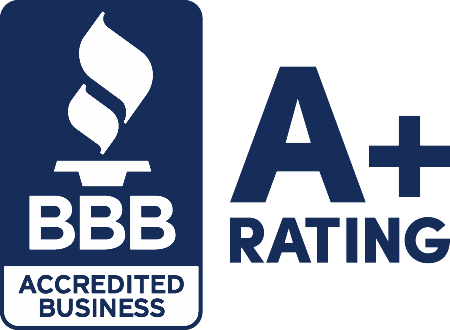What Is Profit Margin?
The basic definition of profit margin is the percentage of revenue earned after all expenses have been deducted. In other words, this is the amount of money your business receives compared to the amount of money your company spends.
Only after taking every single expense and revenue source into account can you obtain an accurate profit margin. This includes taxes, transaction fees, depreciation, etc.
How Do You Calculate Profit Margin?
The formula for calculating profit margin is straightforward:
Profit Margin = (Total Sales – Total Expenses)/Total Sales
There are two kinds of profit margins: net profit margin and gross profit margin. The above formula will produce your net profit margin or the profit margin of your entire company.
To calculate net profit margin, take the company’s revenue over a given period, and subtract that number from the amount of money the company spends over that same period. Then, divide that number by total revenue.
For example, if your company earned $20 million in sales in a year and spent $15 million in the same period, your net profit margin would be 25%.
What Is Gross Profit Margin?
Gross profit margin refers to the profitability of a single product or service. To calculate gross profit margin, take the retail price of a product or service, and subtract the cost of producing it. This includes the cost of materials along with labor. Then, divide that number by the retail price.
For example, if you sell a product for $10 that costs $5 to make, the gross profit margin is 50%.
Why Is Profit Margin Important to Know?
Failing to monitor profit margins often leads to significant cash flow problems going ignored. Countless business owners believed they were doing well because, on the surface, they didn’t notice any serious issues. Had they kept tabs on profitability, they would have received a reality check before the problem escalated beyond their control.
Hence, the importance of profitability can be derived from the importance of solving financial problems before they escalate.
What Is a Good Profit Margin?
Every industry has its standards for what constitutes a “good” margin. If your industry has low overhead costs, the standards for a good margin are higher. The opposite is true for industries with high overhead costs, like restaurants or retail.
For example, while the expected net profit margin for a restaurant is around 3%, an advertising firm is expected to have a net profit margin closer to 6%. The financial services industry has one of the highest average net profit margins in existence at just over 18%, with legal services and healthcare following close behind.
As you can see, the difference between the two industries’ standards for a good profit margin can be quite drastic.
Pricing for Profit Margin: Compile Your Expenses
All businesses share at least one goal: turning a profit. This is only possible if you earn enough revenue to surpass your operational costs. Your prices must therefore support this goal. Thus, the first step in determining price is establishing the cost of creating your product or performing your service.
There are three types of operational costs: materials, labor, and overhead, which just refers to costs that don’t fall under the first two types. Once you have all three, simply add them together to reveal the total cost of your output.
Materials
Your materials are the individual components you use to create your products and perform your services. This includes equipment, supplies, and raw materials like fabric, bread, paint, etc. Some services have little, if any, materials. Others, like massage therapy or cleaning services, have quite a few. If your business sells goods made by another company, the items you purchase from your seller count as materials. If you ship your products, anything used to package them counts as materials as well.
Owners of tech-related businesses, like graphic design or web development, might assume that computers, wireless routers, and servers count as materials. But this is only true if those devices are used to create a product, like software. Most tech businesses just use their devices to perform services, putting them in the overhead category. We’ll delve further into the criteria for this category in just a bit.
Labor
Labor refers to the physical and mental output involved in creating your product or the performance of your service. At first, labor just seems like another word for “employees” or “manpower.” Yes, the cost of your day-to-day employees makes up the bulk of your labor costs. In addition to their salaries, you must factor in employee benefits, retirement plans, and payroll taxes for social security and Medicare.
But labor also includes the time you, the business owner, invest in your business each day. Owners of service-based companies often mistake undervaluing their time investment, which leads them to underprice their services.
You can avoid this mistake by documenting each day-to-day task you complete for your business’s operations. Then, think about how much each task requires time and energy. This perspective prevents you from underestimating or overestimating your contributions when calculating labor costs.
To get an idea of labor costs for similar businesses, examine the US Bureau of Labor Statistics. This will show you the average price of labor for industry peers in your area.
Overhead Expenses
There are two types of miscellaneous or “overhead” expenses: fixed and variable. Like the previous expenses, both types are directly related to operations.
Fixed Overhead
These are monthly expenses that stay the same every month, regardless of what shape your business is in. Examples include rent, insurance, utilities, memberships, subscriptions, etc.
Variable Overhead
While variable overhead expenses compile every month, the amount can vary dramatically. For example, your marketing costs will probably fluctuate during different seasons. The same goes for shipping, inventory, or travel expenses.
Variable overhead expenses also include one-time expenses that occurred during the business’s launch. Examples include fees for licenses and permits, equipment, or security deposits. Once you have listed all of your variable overhead expenses, come up with average monthly figures for each one. In other words, estimate the average cost of marketing, shipping, inventory, etc. based on what you’d pay in an average month, as opposed to an especially busy or slow month. As for your one-time expenses, add them together to produce an annual total, and then use that number to estimate an average monthly cost. Finally, add the estimates to your one-time costs to produce your variable overhead total.
This one can get tricky since your final number is an estimate. To ensure you’ve come up with an appropriate variable overhead, consult this worksheet from the Small Business Administration.
Once you’ve compiled your expenses, the next step is to determine your desired profit.
How Do You Determine Your Desired Profit?
There are volume ways to determine your desired profit. You can take the cost of creating one unit or serving one customer and then set a goal for a dollar amount above that cost. For a more practical number, estimate the percentage of revenue you’d like to have leftover after covering all operational expenses. Regardless of which method you choose, you may end up with an overly optimistic or pessimistic number. For this reason, feel free to speak to business financing companies, accountants, and other entrepreneurs to get an idea of the profit margin you should be shooting for.
If you’re still unsure about a reasonable margin, look into industry data from Risk Management Associates, a nonprofit organization. RMA publishes reports featuring financial data (cash flow, profitability, debt-to-income ratios, etc.) from nearly 800 industries every year. For around $160, you can purchase your industry’s annual report and see your peers’ profit margins. There’s no cost for checking if RMA covers your industry, but it’s pretty safe to assume it does.
Pricing for Profit Margin: Know Your Target Market
Another major factor in determining price is the preferences of your target market. You must collect extensive general and behavioral customer data to get an idea of what they would be comfortable paying for your product or service. This is the kind of data startups emphasize to entice venture capitalists and a central purpose of focus groups about upcoming releases. Unlike publicly accessible data from companies like the Pew Research Center, this data pertains explicitly to your target market.
If you have the money to do so, paying a research firm to collect the data could save you a lot of time and energy. If not, you must use your personal and social media networks to collect it yourself. You could conduct informal surveys online through services like SurveyMonkey and Google Surveys. Both are easy to use and inexpensive. But surveys are only useful if you know which specific information you’re after and how to obtain this information in the form of different questions.
Survey Questions
Your research should start with basic information, like your ideal customer’s gender, age, geographical location, educational background, and income level.
Then, you can gauge their opinion on other products or services similar to yours. Consider listing several similar offerings and asking which one is their favorite.
To see if your target customer is partial to low prices, ask about the role price plays in most of their purchases. Many companies obtain this information by asking survey participants to rank the importance of price on a scale of 1-10. But since this tactic often provokes a wide range of answers, you should probably follow with a question about the relationship between price and convenience. You could simply ask participants which matters more or ask them to choose between two items: One is cheaper, but the other is more accessible or comes with more amenities.
Lastly, apply the same concepts to the relationship between price and quality. After asking participants which matters more, ask them to choose between a high-quality offering and a cheaper alternative. You could also ask them to rank the importance of brand name on a scale of 1-10 since high-quality offerings are typically associated with certain brand names.
Interpreting Your Findings
Once your research is complete, you should tell how your ideal customer prioritizes cost, quality, and convenience. Finding out that cost is their top priority doesn’t necessarily mean you have to price your offerings as low as possible. Instead, you could bundle multiple offerings together, so customers get more for their money. Another proven tactic for appealing to price-conscious customers is tiered pricing. This system encourages customers to buy larger quantities of products by applying discounts based on quantity.
If your data suggests that convenience is the top priority, you could price your offerings on the higher side as long as you offer amenities customers can’t find anywhere else. Can customers customize the color or some other aspect of your products? Do customers get a free product if they order a certain amount?
If your typical customer values quality above everything else, be sure not to price your offerings lower than your competitors. These individuals likely associate low prices with low quality.
Pricing for Profit Margin: Research Your Competition
Gaining a firmer understanding of your target market allows you to see who your real competitors are. Your top competitors share your target market because their offerings appeal to the same preferences as yours. It’s up to you to essentially steal customers from these companies. So, when you consider your target market’s preferences, how should you price your offerings compared to your top competitors?
If you still aren’t 100% about your top competitors, you can obtain additional data from resources like Google Trends. This free tool can show you which search terms sure by people looking for offerings similar to yours. Think of the search terms you want your offerings to show up for. You will likely find that many people are entering these terms alongside the names of specific companies. The names used most often in these searches should probably be included in your list of top competitors.
You can learn even more about the pricing strategies of top competitors by following their social media accounts. Specifically, this will show you what kind of promotional tactics they use to glamorize their prices. When do they offer these promotions? Do they emphasize their prices or try to direct their followers’ attention to another feature? If your previous research found that price is important to your target market, consider if you can match or even beat your top competitors’ discounts.
What Are the Five Most Common Pricing Models?
Now that you’re fully aware of your target market and your top competitors, you can examine the most popular pricing models for small businesses. These two factors will determine which of the five models makes the most sense for you. But before we explain each model, it’s crucial to remember that pricing models are more like starting points than lifelong guides. Businesses often start with one model and gradually apply minor features of other models as they grow.
Cost-Plus Pricing
This is the most basic pricing model, though it’s not always realistic for new businesses. Cost-Plus pricing follows the same arbitrary system as determining your ideal profit margin. You just calculate the cost of making one product or serving one customer and then decide how much profit you’d like to turn on each sale. Instead of factoring in things like competition, target market, and the laws of supply and demand, you just pick a profit margin out of thin air and price your offerings accordingly.
Since new businesses are concerned about breaking even, they often create profit margins that are simply equal to the costs of making their products. This logic technically counts as Cost-Plus pricing.
But if your business is brand new, basing your profit on your total startup costs might not be the best idea. New companies tend to have substantial one-time expenses on top of their operational costs. For this reason, it might not be possible to draw enough profit to cover all of these expenses.
Dynamic Pricing
With dynamic pricing, the price of an offering varies based on when it’s sold, how many other companies sell it, and the level of demand at the current moment. In other words, the price of the offering changes when the cost of creating rates selling it changes beforehand.
Think of how many different prices you’ve seen for the same item. This is because different types of businesses (franchises, wholesalers, eCommerce, independent businesses, etc.) pay different amounts for the item and then factor those costs into their prices.
Also, if the item’s demand is low, the maker might sell it to a wholesaler since wholesalers buy large quantities of lower-priced items. Then, the wholesaler might sell the items to another business for an even lower price. That business can, therefore, afford to sell the item at a much lower price than usual.
If you provide a service, dynamic pricing allows you to charge more when you’re busier. Higher prices can prevent you from taking on too much work (some customers won’t be able to afford you). And if the work does get overwhelming, the higher prices can cover the costs of outsourcing certain tasks.
Market Share Pricing
Market share pricing might be the logical choice if you work in a crowded or rapidly-growing industry. Unlike the other models, the primary goal of market share pricing is not to maximize profit. Instead, your price challenging to maximize customers, i.e., your business’s share of the market. Since a new company has almost no market share, you may have to offer lower prices than your competitors.
The key words in that sentence are “may have to.” Market share pricing is only recommended if your industry is so competitive that price is the most logical way to build a solid customer base. You must also be fairly certain that these prices will produce high volumes of sales. If not, lower prices will do more harm than good.
Some businesses start with market share pricing with the intent of raising their prices as their customer base expands. But this might not always be a realistic possibility. Higher prices could cause your customers to leave just as quickly as they arrived.
Competitive Pricing
Competitive pricing has two rules. First, all businesses base their prices on the industry standard set by the market leader. Competition is most common in industries where there’s not much difference in quality between businesses. If the market leader raises or lowers their prices, the other businesses usually do the same.
Secondly, if you want to charge higher prices, you must conclusively prove to your customer that your offerings’ quality is worth the price. But this also implies that your offerings stand out from the competition. In this case, it might make more sense to choose the next and final pricing model:
Value-Based Pricing
Your research on your target market might find that your customers prioritize quality over price and do not have tight budgets with your industry. Value-Based Pricing allows you to charge higher rates due to the perception of higher value. The easiest way to denote higher value is to offer better quality than your competitors simply.
You could also justify higher prices by offering unparalleled convenience or accessibility. This is why eCommerce businesses and local small businesses tend to charge higher prices than industry giants. It takes less time to find and buy what you need.
Another way to justify higher prices is to capitalize on the power of brand awareness. Certain products are valued more for the name they carry, as opposed to quality. These brands can get away with this because they invested significant time and money into getting their name out there. In some industries, popularity can exude a higher value.
What Is the Risk of Setting Your Prices Too Low?
Most new businesses charge too little, often because they’re afraid of driving customers away. They undervalue their offerings and charge less than their customers would actually pay.
But as any experienced business owner will tell you, charging low rates usually attracts low-value customers. Someone who doesn’t understand the quality of your offerings is not someone you can count on. You’re going to have to raise your prices eventually. If the majority of your customers were only attracted to your low prices, they’d probably leave as soon as you raise them.
Undervaluing your offerings will also not allow you to sustain your business as you take on more customers. After all, more customers mean more expenses.
To test the waters, start small with a slight increase of 2% – 5%. Let’s say your business grossed $200,000 in sales in 2019. If you made the same sales this year but raised your prices just 2.5%, you could reap an extra $5,000 in profits.
How To Increase Your Profit Margin:
Profitability is the most accurate indicator of overall success. For this reason, business leaders are continually coming up with new ways to raise the profit margin on their offerings. Some of these strategies could increase your profit margin so significantly that it lessens the financial risk in lowering your prices. Here are two particularly popular strategies of this nature:
1. Lower Shipping Costs
Any established business that sells shipped goods has likely accepted that shipping costs and other shipping issues will be ongoing throughout their careers. It might seem that while your customers’ standards for shipping costs are decreasing every day, your shipping service is thinking of new ways to make you pay more. The fact that the costs for the labor and packaging supplies required to fill your orders are on the rise doesn’t help either.
For this reason, it is widely advised to compare the shipping rates of all primary carriers once a year, at least. In addition to overall prices, compare numbers for package sizes, weight, and the locations you ship to most often. Some services tack on surcharges for certain types of orders, like shipping to residential addresses. You might discover that your solution is more simple than you thought, like using the smallest possible packaging that will not damage your products upon arrival.
2. Practice Last Minute Inventory Management
The longer an item goes unsold, the less profitable it becomes. But since demand is so difficult to predict, businesses often end up buying massive amounts of inventory. This seems like the safest choice. Though the sales will be less profitable, they won’t risk selling out or disappointing customers by only carrying certain items.
However, there are several solutions to this common dilemma. You could invest in software that forecasts demand based on historical data. Another option is obtaining a business line of credit, which would allow you to practice what’s known as “last-minute” inventory management. This refers to the act of buying new or extra items just days before they are sold. With a business line of credit, you could capitalize on sudden spikes in demand even when you’d otherwise lack the funds to do so. Last-minute inventory management gives you the ability to maximize profits and set lower prices because you know the items will sell very quickly.
Which Strategy Should You Use?
These are just a few of the many proven strategies for creating prices that maximize profitability. It may take some experimenting to find the right approach for your target audience. Significant competitive edges don’t just appear out of thin air. Besides, once you find the best possible price and profit margin, you’ll have another, even tougher challenge in front of you. And that’s making sure nothing else your business does causes these numbers to change.













